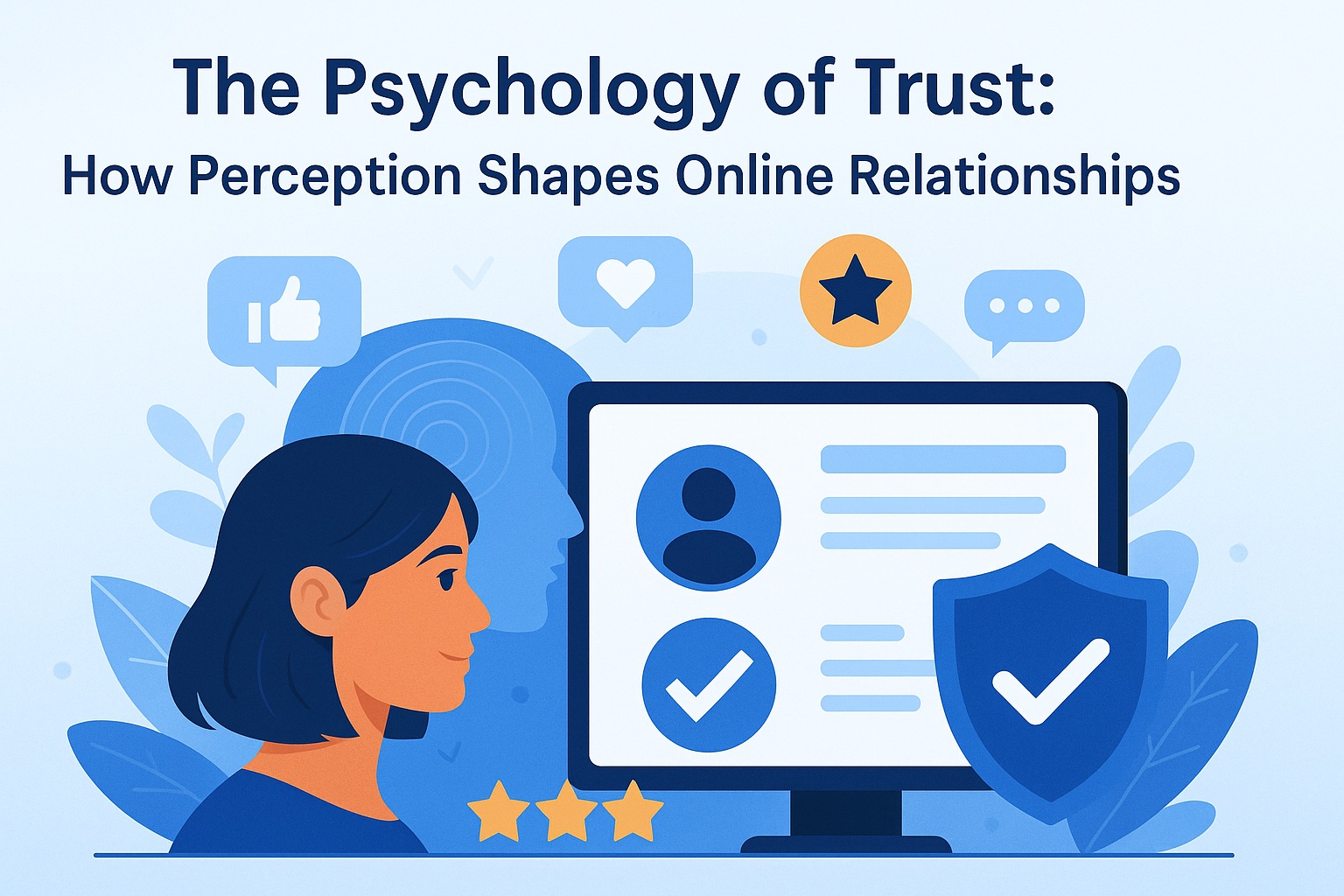
The Psychology of Trust: How Perception Shapes Online Relationships
Published: July 2025
Trust is the invisible currency that drives every online interaction. Whether you’re a freelancer, entrepreneur, or consumer, your decisions are influenced by subtle cues that signal credibility or raise suspicion. Understanding the psychology behind trust can help you build stronger relationships and protect your reputation.
Why Trust Matters Online
In the physical world, trust develops through repeated interactions, eye contact, and body language. Online, these signals are replaced by digital proxies—reviews, photos, tone of voice, and consistency. When people can’t meet you in person, they rely on these cues to decide if you’re credible.
The Halo Effect in Digital Reputation
One powerful psychological principle shaping trust is the Halo Effect. If someone sees positive reviews or professional visuals, they are more likely to assume other aspects of your brand are trustworthy. This cognitive shortcut works both ways—a single negative impression can overshadow dozens of positive ones.
Consistency Builds Trust Over Time
Consistency is critical. If your LinkedIn profile says you’re an expert consultant but your website hasn’t been updated in two years, visitors may question your credibility. Regular updates, clear messaging, and a cohesive voice help reassure people that you are authentic and reliable.
Case Study: Building Credibility with Transparency
A freelance designer grew their business by posting behind-the-scenes videos of their process. This transparency built trust and allowed clients to see the care and skill behind each project. Even when small mistakes happened, the openness created goodwill that outweighed any doubts.
Practical Ways to Build Online Trust
Here are proven steps to establish credibility:
- Show Social Proof: Use testimonials, reviews, and endorsements prominently.
- Be Consistent: Align your website, profiles, and messaging.
- Respond Promptly: Answer questions and address concerns quickly.
- Demonstrate Expertise: Publish helpful, relevant content regularly.
- Use Professional Visuals: High-quality images and design convey competence.
Understanding Cognitive Biases
Humans rely on mental shortcuts to make quick judgments. Familiarity bias, for example, makes us trust brands we’ve seen multiple times. This is why consistent posting and visibility are so powerful. Likewise, negativity bias means people pay more attention to negative information, which can linger longer in their minds.
Monitoring Your Trust Signals
Use tools like Google Alerts, Mention, or RiskPeek Monitoring Suite to track how people talk about you online. Address negative feedback professionally, thank those who praise your work, and look for patterns in sentiment. Monitoring helps you stay aware and adapt before small issues grow into bigger problems.
"Trust arrives on foot and leaves on horseback."
Action Steps to Improve Your Digital Trust
Here’s how to start:
- Audit your profiles and website for consistency and professionalism.
- Gather at least three recent testimonials and feature them prominently.
- Create a content calendar to share insights regularly.
- Set up monitoring tools to track mentions and sentiment.
- Respond to every review—positive or negative.
Key Takeaways
Trust is the foundation of every online relationship. By understanding the psychology behind how people form impressions, you can shape your digital reputation intentionally. Consistency, transparency, and responsiveness will help you build lasting credibility.
📣 Ready to elevate your credibility?
Book a free strategy session with our team today.